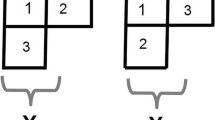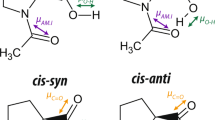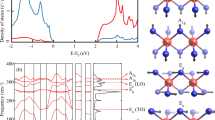Abstract
THE trigonal planar symmetry of the three bonds formed by the nitrogen atom attached to the sulphur atom in the structure described in the preceding communication suggests that the orbitals of this nitrogen atom correspond in bond formation to a hybridization of the type (1s)2(2p)2(2s2p2)3 rather than to (1s)2(2s)22px2py2pz. In the former electronic configuration, the three sp2 orbitals will possess trigonal symmetry, and there will be one doubly occupied π-orbital orthogonal to the plane of the sp2-orbitals. This type of hybridization has been postulated by us1 in a discussion of the properties of the >N—H O=C< structure in proteins.
This is a preview of subscription content, access via your institution
Access options
Subscribe to this journal
Receive 51 print issues and online access
$199.00 per year
only $3.90 per issue
Buy this article
- Purchase on Springer Link
- Instant access to full article PDF
Prices may be subject to local taxes which are calculated during checkout
Similar content being viewed by others
References
Evans, M. G., and Gergely, J. (in the press).
Mulliken, R., J. Chem. Phys., 2, 782 (1934).
Gordy, W., J. Chem. Phys., 15, 81 (1947).
Costain, W., and Cox, E. G., Nature, 160, 826 (1947).
Author information
Authors and Affiliations
Rights and permissions
About this article
Cite this article
EVANS, M., GERGELY, J. [Letters to Editor]. Nature 162, 770–771 (1948). https://doi.org/10.1038/162770b0
Issue Date:
DOI: https://doi.org/10.1038/162770b0
Comments
By submitting a comment you agree to abide by our Terms and Community Guidelines. If you find something abusive or that does not comply with our terms or guidelines please flag it as inappropriate.



